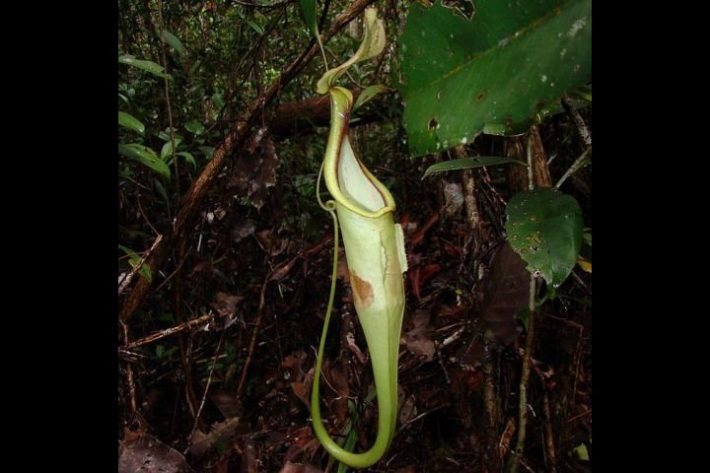Press Release: Why plants eat faeces when they could eat flesh
What drives a carnivorous plant to abandon eating meat in favour of a diet of bat faeces? Ecologists from Germany, Brunei Darussalam and Australia believe they have the answer. Their ingenious study – which sheds new light on the evolution of mutualism – is published today in the Journal of Ecology.

Mutualism – where two different species exchange resources or services – is widespread in nature, and often involves one species outsourcing a key task that it originally performed itself.
Ecologists believe such “ecological outsourcing” has evolved because it is more efficient, but this hypothesis is rarely tested because measuring the costs and benefits is challenging. Now, an international team of ecologists led by Dr Caroline Schöner from the Department Applied Zoology and Nature Conservation, University of Greifswald has devised an ingenious way of putting this hypothesis to the test.
They took advantage of a natural experiment involving the woolly bat Kerivoula hardwickii, and two closely-related species of pitcher plant: Nepenthes hemsleyana and Nepenthes rafflesiana. All live in the dense peat swamp and heath forests as well as lowland rainforests of northern Borneo.
According to Schöner: “Pitcher plants grow on nutrient-poor soils, but whereas N. rafflesiana copes with this lack of nutrients by using fluid-filled pitchers to catch insect prey, N. hemsleyana has abandoned carnivory in favour of a unique and intimate relationship with the woolly bat.”
“To provide the bat with an ideal roost, the pitchers of N. hemsleyana have evolved to perfectly fit the bat’s body. Unlike other pitcher plants they contain very little fluid. And most striking of all, the backwall of the pitcher forms a parabolic dish that aids the bat’s echolocation. In return for its roost, the bat hunts and pre-digests the insects, depositing them as faeces in the pitcher.”
To measure the costs and benefits of this mutualism, Schöner selected plants from both species in the field. When they produced new pitchers, she blocked them with cotton wool and cling-film to prevent bats or insects from entering.
She then fed the pitchers by hand with bat faeces, insects, or a mixture of the two, and measured their growth rate, photosynthesis and nitrogen concentrations before repeating the tests in glasshouses back in Germany.
“As the hypothesis suggests, N. hemsleyana fed on bat faeces had the highest rates of growth and photosynthesis, and the highest nitrogen levels, showing that it benefits by efficiently outsourcing prey capture and digestion to its mammal mutualists and strongly benefits from this ecological outsourcing,” explains Schöner.
“By interacting with bats N. hemsleyana has access to a wide variety of insects because bats are better hunters than plants. And because the bats have predigested the insects, the nutrients should be easier for the plants to extract.”
Caroline Schöner et al (2016). ‘Ecological outsourcing: a pitcher plant benefits from transferring pre-digestion of prey to a bat mutualist‘, doi: 10.1111/1365-2745.12653, is published in Journal of Ecology on 7 December 2016.
Like what we stand for?
Support our mission and help develop the next generation of ecologists by donating to the British Ecological Society.